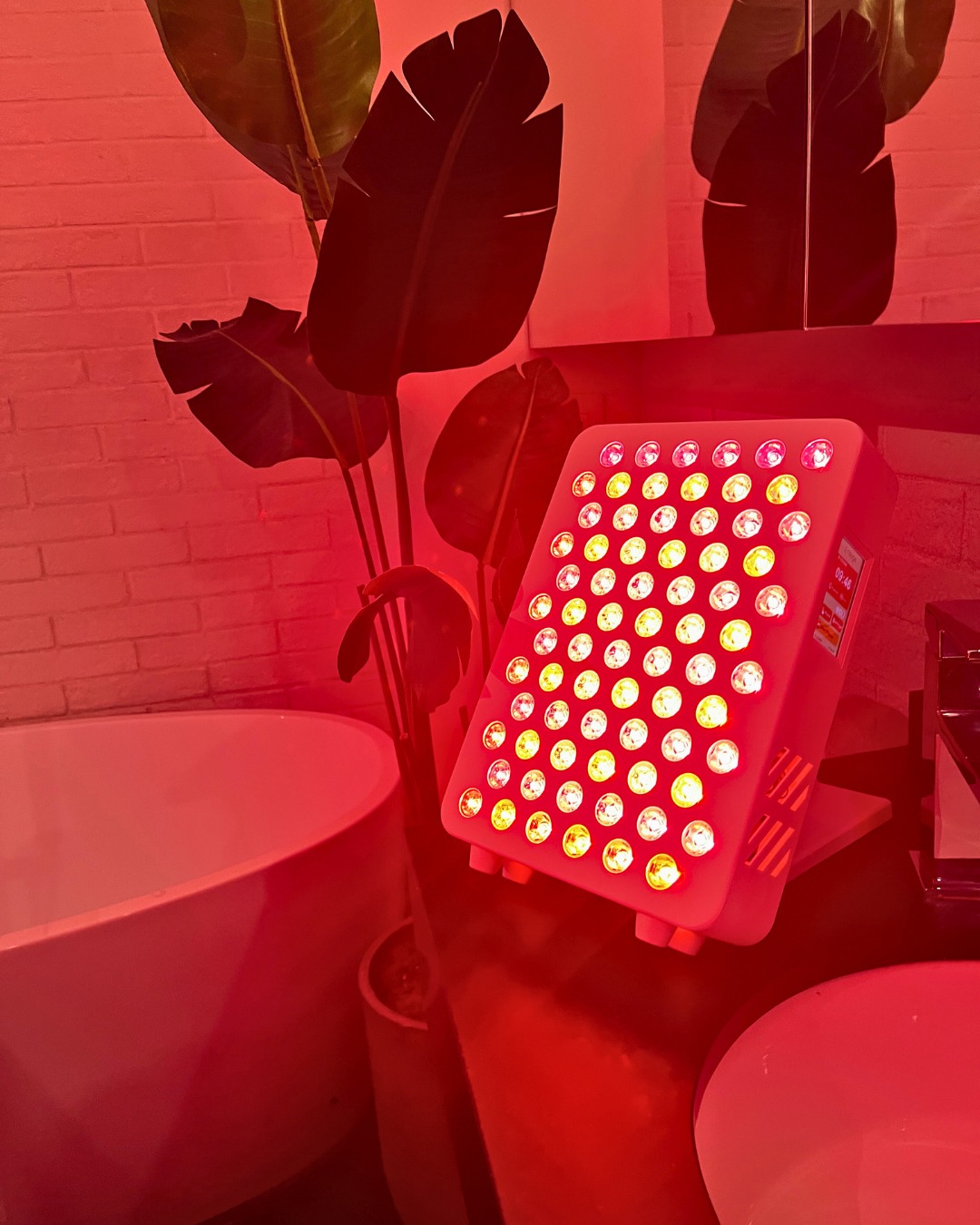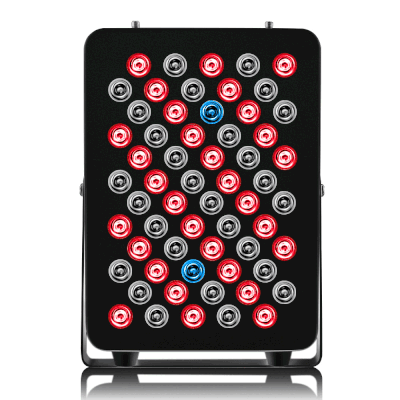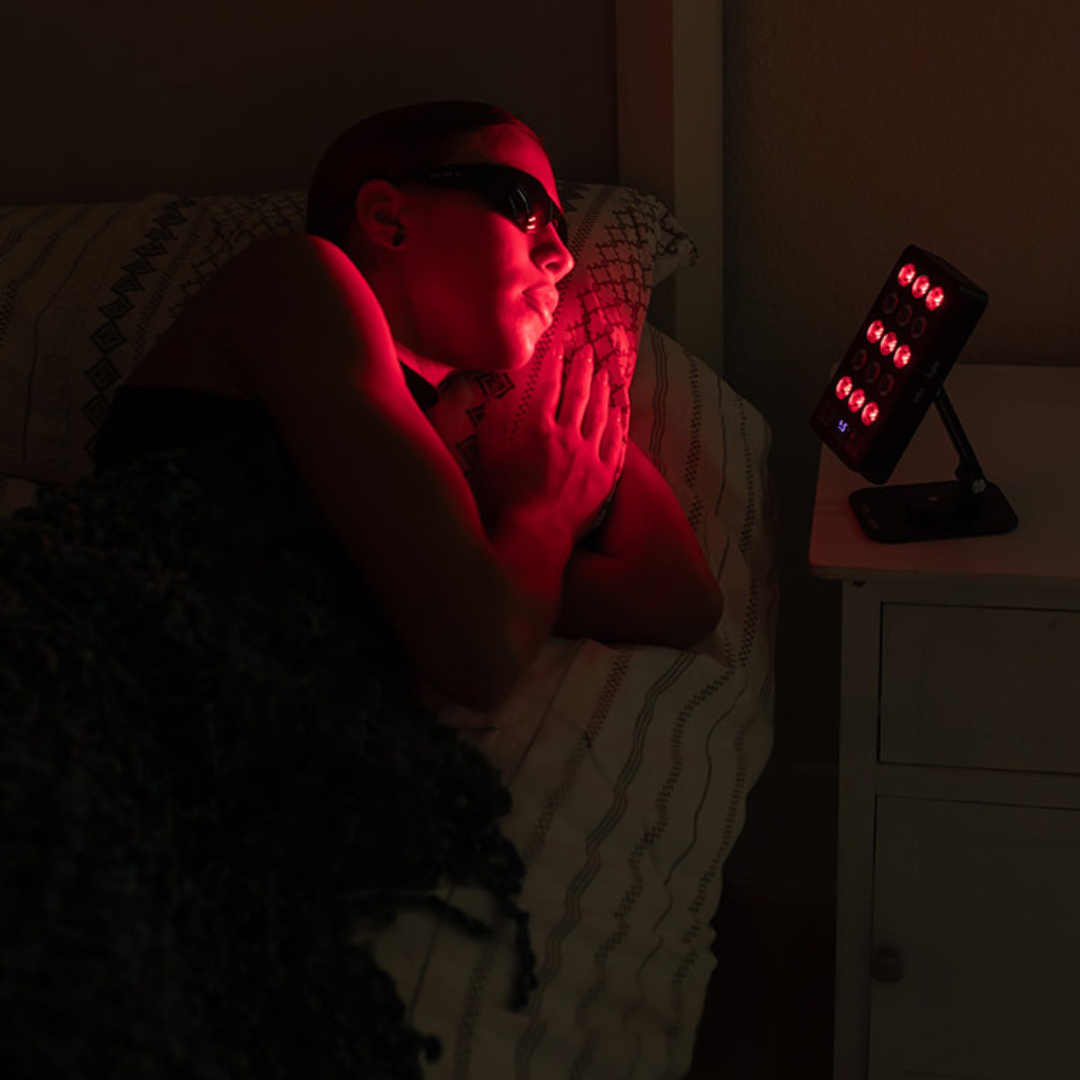![]() Free Shipping
Free Shipping ![]() Buy Now, Pay Later
Buy Now, Pay Later ![]() Eligible
Eligible
Red Light Therapy for Broken Capillaries: A Complete Guide

If you’re struggling with the fine, web-like appearance of broken capillaries (telangiectasia), you’ve likely searched far and wide for a solution. These tiny, dilated blood vessels, often seen on the cheeks and nose, can be a source of frustration. In the world of non-invasive skincare, red light therapy (RLT) has emerged as a potential treatment for a myriad of concerns. But does it hold the key to reducing the appearance of broken capillaries?
This comprehensive guide dives deep into the relationship between red light therapy and broken capillaries, exploring the science, the realistic outcomes, and how to approach treatment safely.
What Are Broken Capillaries?
Before assessing the treatment, it’s crucial to understand the condition. Broken capillaries are small, enlarged blood vessels that sit just beneath the surface of the skin. They appear as red, purple, or blue thread-like lines, most commonly on the face and legs.
Primary causes include:
- Genetics
- Sun damage
- Aging and loss of skin elasticity
- Rosacea
- Hormonal changes
- Trauma or injury to the skin
- Extreme temperature changes
- Alcohol consumption
How Red Light Therapy Works on a Cellular Level
Red light therapy, also known as low-level laser therapy (LLLT) or photobiomodulation, uses specific wavelengths of red and near-infrared light to penetrate the skin. Unlike lasers that use heat to destroy tissue, RLT is a gentle, non-thermal process.
When these light particles are absorbed by the mitochondria within our cells, it stimulates a cascade of beneficial effects:
- Boosts Cellular Energy (ATP): Enhances the energy production of skin cells, helping them function more efficiently and repair themselves.
- Reduces Inflammation: A key factor in many skin conditions, including those that cause capillary fragility.
- Stimulates Collagen & Elastin Production: Strengthens the skin’s support structure, which can help support weak blood vessel walls.
- Improves Blood Circulation: Promotes healthier circulation and oxygenation of tissues.
Can Red Light Therapy Treat Broken Capillaries? The Nuanced Answer
This is the core question, and the answer requires nuance. Red light therapy is not a direct “cure” for existing broken capillaries in the same way that laser or intense pulsed light (IPL) is.
IPL/Laser: These modalities use targeted thermal energy to precisely coagulate and destroy the visible damaged blood vessel. The body then naturally absorbs it.
Red Light Therapy: RLT works indirectly and preventatively. It does not generate the heat required to “zap” a capillary.
Dr. Michael Hamblin, a leading photomedicine researcher, explains: “Red and near-infrared light are not absorbed strongly by hemoglobin, unlike green or yellow light used in vascular lasers. Therefore, RLT does not target the blood within the capillary to destroy it. Its primary benefits are in reducing the underlying inflammation and strengthening the skin’s supportive matrix.”
The Indirect Benefits: Why RLT is Still Valuable
While it may not erase existing spider veins, RLT offers significant benefits that can reduce their appearance and, more importantly, prevent new ones from forming.
- Strengthens Capillary Walls: By stimulating fibroblast activity and boosting collagen production, RLT strengthens the skin’s dermal layer. This creates a more supportive environment for capillaries, making them less prone to breaking.
- Reduces Background Redness & Inflammation: Conditions like rosacea are characterized by inflammation and widespread redness, which often accompanies broken capillaries. RLT’s powerful anti-inflammatory effects can calm this overall redness, making individual broken capillaries less noticeable.
- Improves Overall Skin Health: Healthier, thicker, more resilient skin is better equipped to withstand environmental stressors that cause capillaries to break.
Red Light Therapy vs. Other Treatments: A Comparison
The following table illustrates how RLT compares to other common treatments for broken capillaries.
| Treatment | How It Works | Best For | Pros | Cons |
|---|---|---|---|---|
| Red Light Therapy | Indirectly strengthens skin & reduces inflammation via photobiomodulation. | Preventing new capillaries, reducing overall facial redness, improving skin health. | Non-invasive, painless, no downtime, improves overall skin quality. | Does not remove existing capillaries; results are gradual. |
| Laser (e.g., PDL) | Uses specific light wavelengths absorbed by hemoglobin to heat and destroy the vessel. | Individual, visible broken capillaries. | Highly effective for existing vessels; precise. | Can be painful, may cause bruising, requires downtime, expensive. |
| Intense Pulsed Light | Uses broad-spectrum light to target hemoglobin and coagulate the vessel. | Diffuse redness and multiple broken capillaries. | Treats larger areas at once. | Requires multiple sessions, can cause redness/swelling, sun sensitivity. |
| Sclerotherapy | Injects a solution into the vein, causing it to collapse and fade. | Spider veins on the legs. | Gold standard for leg veins. | Not for facial use; can cause side effects. |
A practicing dermatologist’s perspective: “I often recommend red light therapy to my patients with rosacea and sensitive skin as a maintenance and preventative treatment. It won’t replace the need for a vascular laser for significant telangiectasia, but it can create a calmer, stronger canvas of skin, potentially reducing the frequency of required laser treatments.”
VELLGUS Elite V2
THE #1 RATED RED LIGHT DEVICE
How to Use Red Light Therapy for Capillary Health
If you want to incorporate RLT into your routine for its preventative and skin-strengthening benefits, follow these steps:
- Choose the Right Device: Opt for a high-quality, FDA-cleared device from a reputable brand. Look for panels or masks that emit wavelengths in the 630-660nm (red) and 810-850nm (near-infrared) range.
- Consistency is Key: Use the device as recommended, typically 3-5 times per week for sessions of 10-20 minutes.
- Practice Proper Skincare: Cleanse your face thoroughly before a session to ensure maximum light penetration.
- Protect Your Skin: RLT is not a substitute for sunscreen. Daily sun protection is the single most important thing you can do to prevent broken capillaries.
- Manage Expectations: Understand that you are investing in long-term skin resilience, not a quick fix for existing veins.
Frequently Asked Questions (FAQ)
Can red light therapy make broken capillaries worse?
There is no scientific evidence to suggest that RLT worsens broken capillaries. It does not produce the thermal energy that could damage vessels. However, always use devices as directed.
What is the best light therapy for broken capillaries?
For directly targeting and eliminating existing broken capillaries, vascular lasers (like Pulsed Dye Laser) or IPL are the most effective. Red light therapy is best for prevention and reducing underlying inflammation.
How long does it take to see results with RLT?
For improvements in overall skin tone, redness, and texture, many users report noticing a difference after 4-8 weeks of consistent use. Preventative benefits are ongoing.
In the quest to tackle broken capillaries, red light therapy should be viewed as a powerful supportive treatment, not a standalone solution. It excels at creating healthier, less inflamed, and more robust skin, which can minimize the appearance of redness and prevent future capillary fragility.
For those seeking to erase existing spider veins, consult a dermatologist about laser or IPL treatments. But for anyone looking to build their skin’s long-term defense system and achieve a calmer, more even complexion, red light therapy is a safe, non-invasive, and highly beneficial addition to any skincare regimen.








